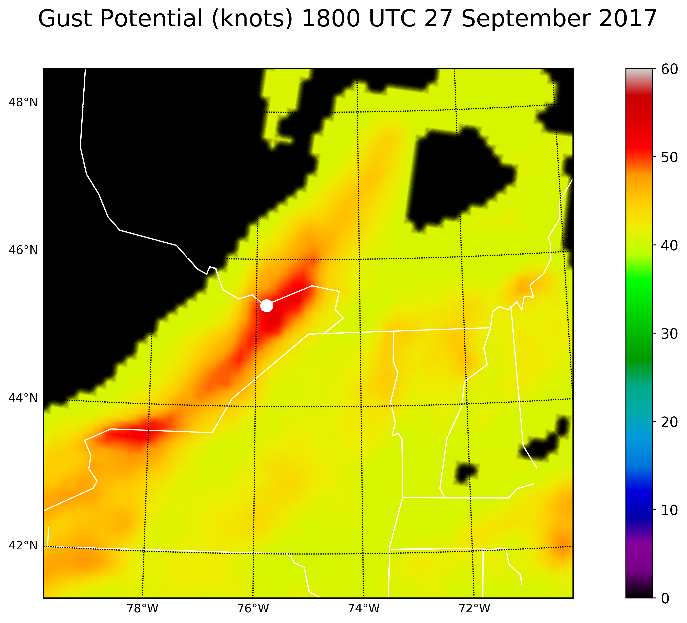Microburst Windspeed Potential Index (MWPI)
Algorithm Description
Of growing interest in the operational meteorology community is the short term forecasting of severe thunderstorm straight-line winds resulting from microbursts. Microbursts are strong localized downdraft phenomena that induce outbursts of damaging winds at or near the ground. The Microburst Windspeed Potential Index (MWPI) is designed to quantify the most relevant factors in convective downburst generation in intermediate thermodynamic environments by incorporating 1) surface based CAPE, 2) the temperature lapse rate between the 670- and 850-mb levels, and 3) dew point depression difference between the 670- and 850-mb levels. The MWPI is incorporated into a predictive linear model that consists of a set of predictor variables (i.e., dewpoint depression and temperature lapse rate) that generates output of the expected microburst risk.
Primary applications include short-term forecasting of microburst wind gust potential derived from linear and quadratic regression.
Key Users:
- National Weather Service
- India Meteorological Department
Algorithm PI
Principal Investigator
Kenneth Pryor
List of satellite/instruments for algorithm
- GOES-15 Imager and Sounder
- GOES-16 Advanced Baseline Imager
- INSAT-3D


